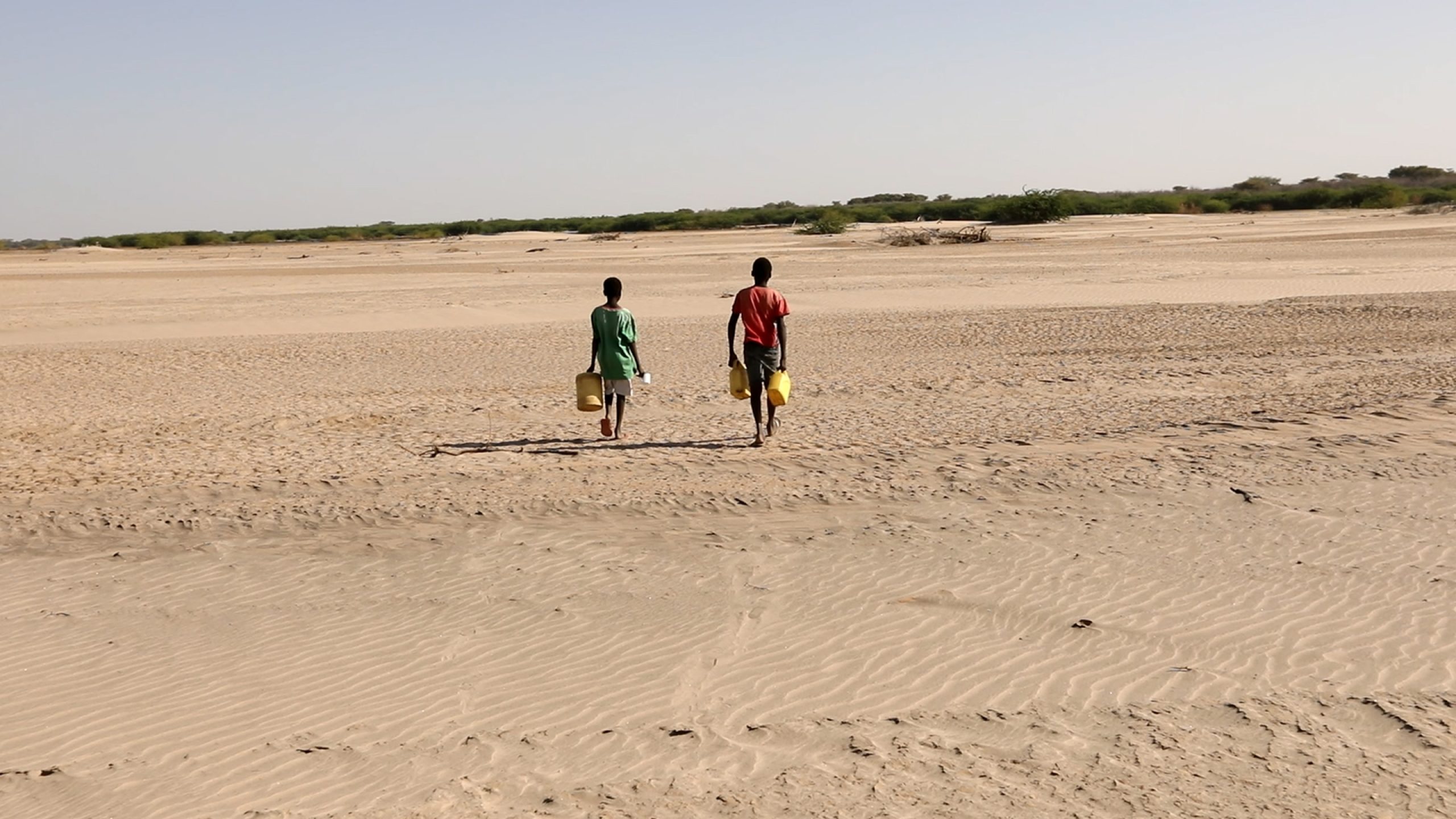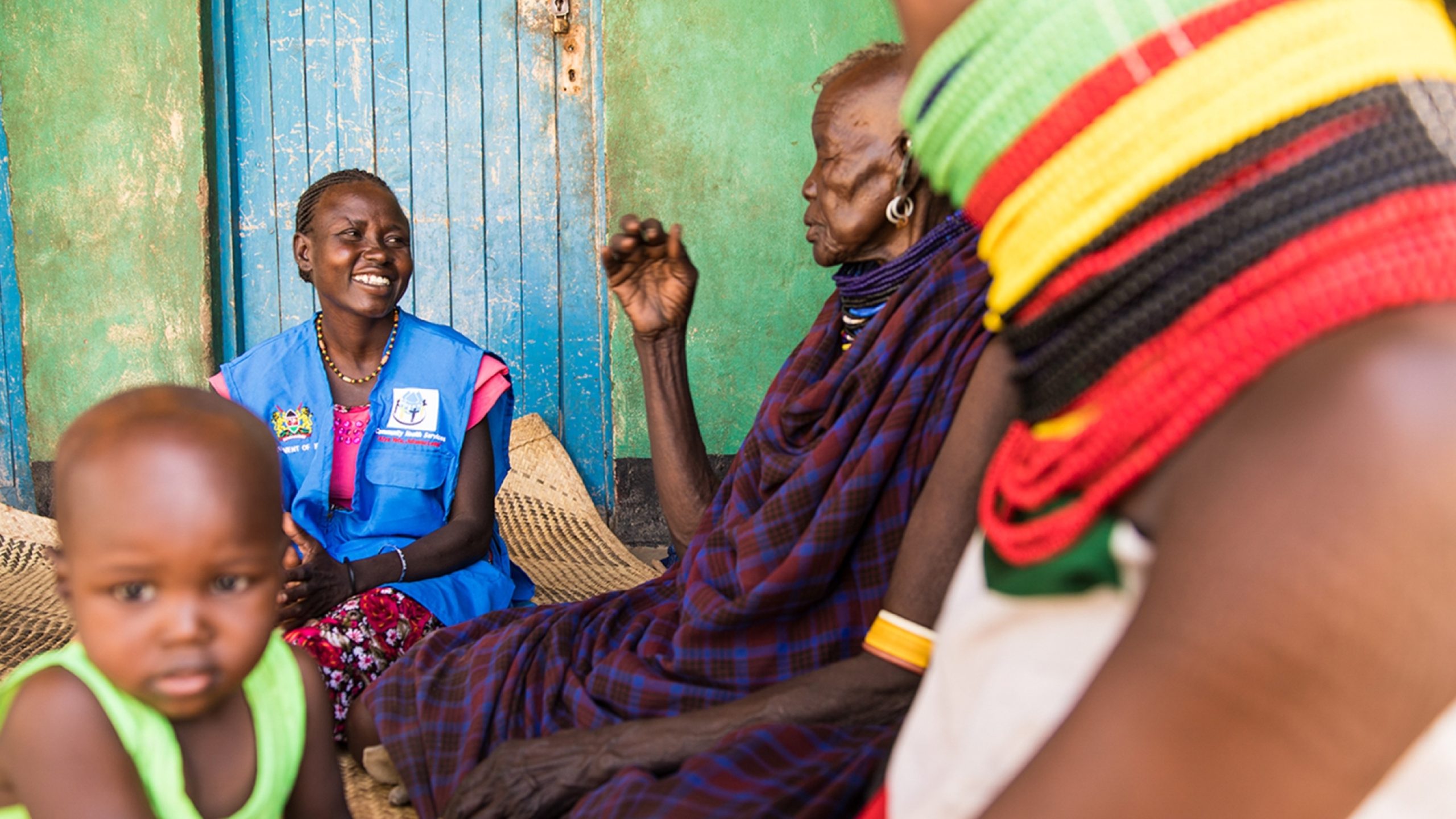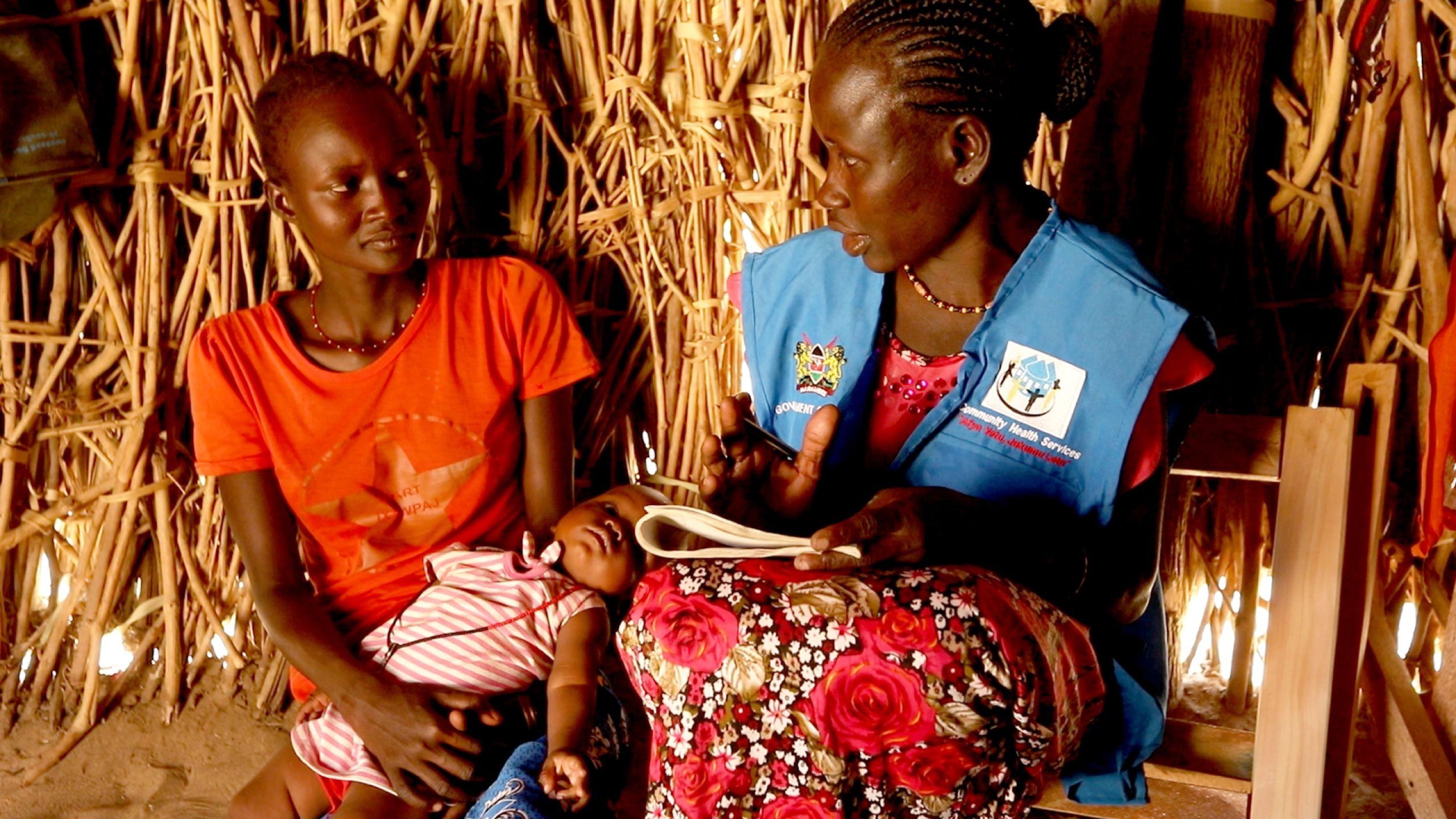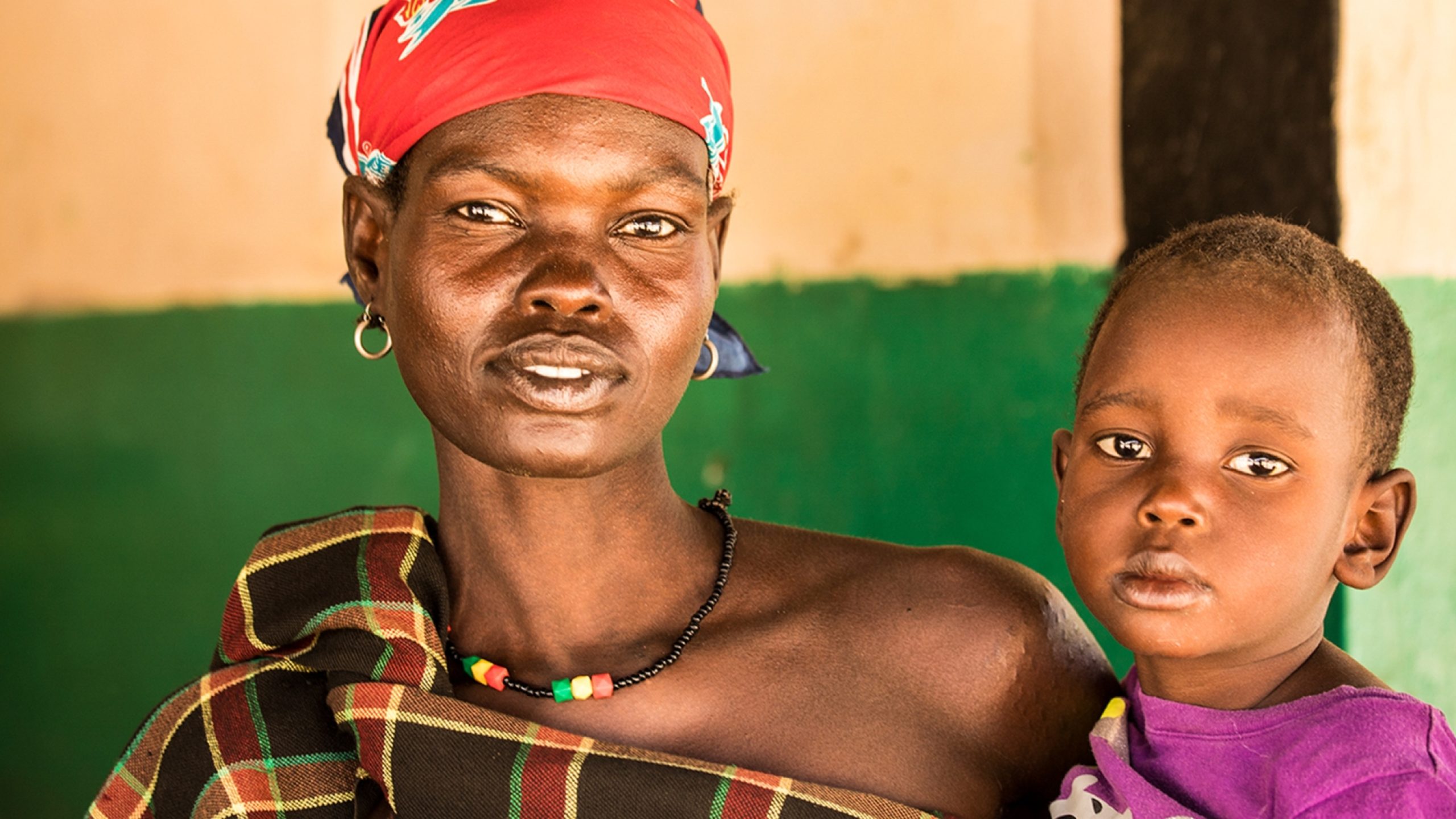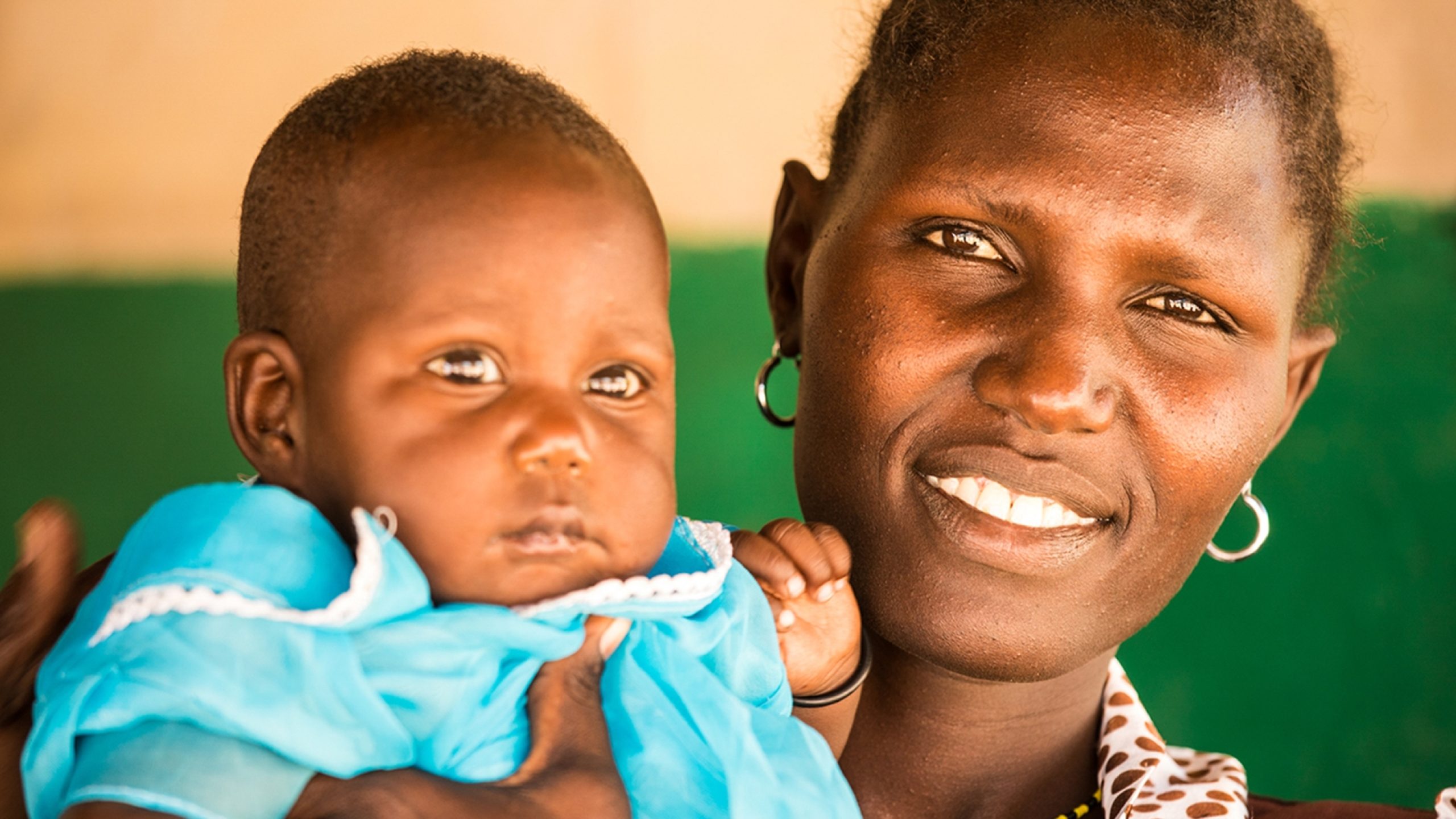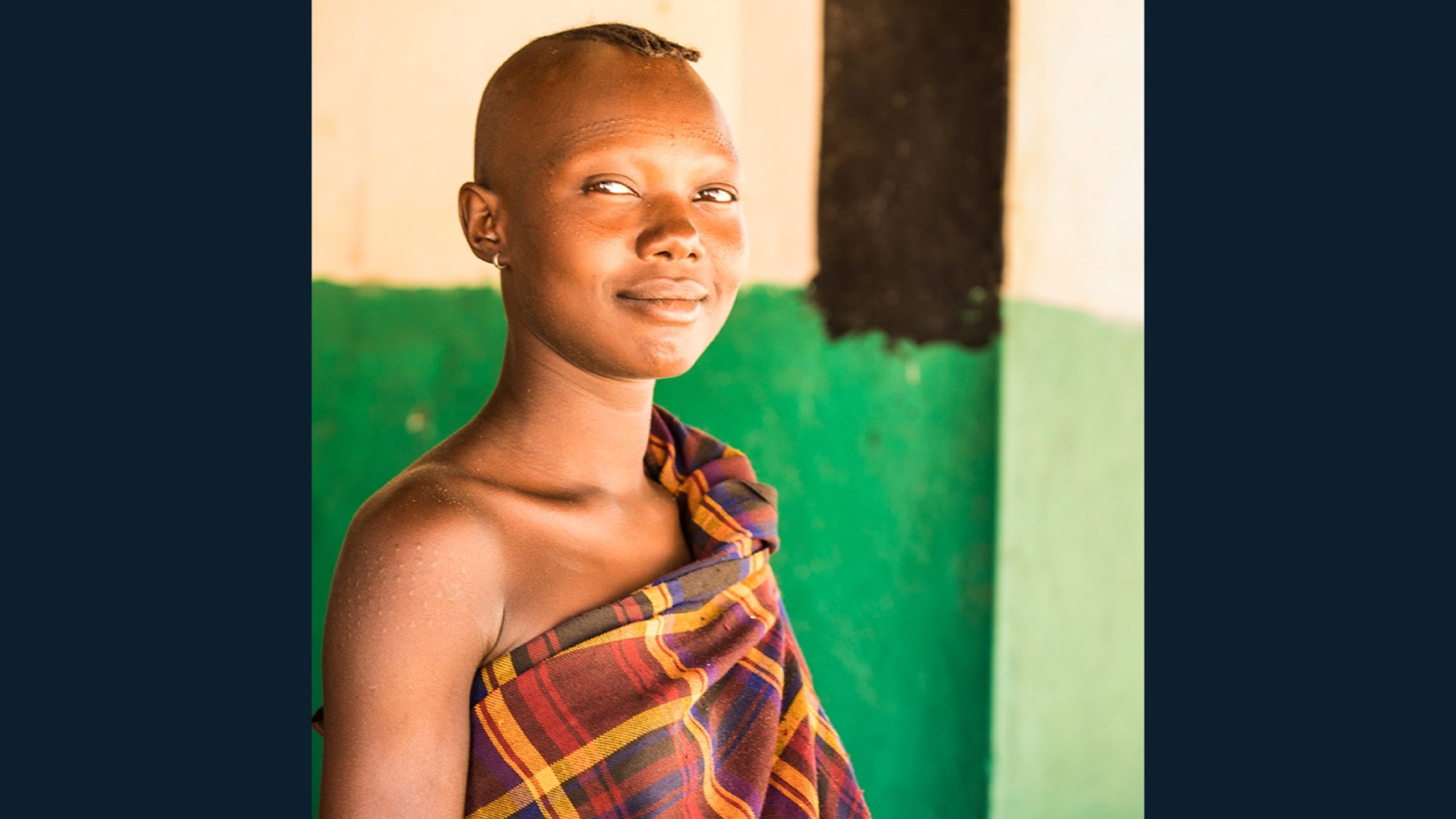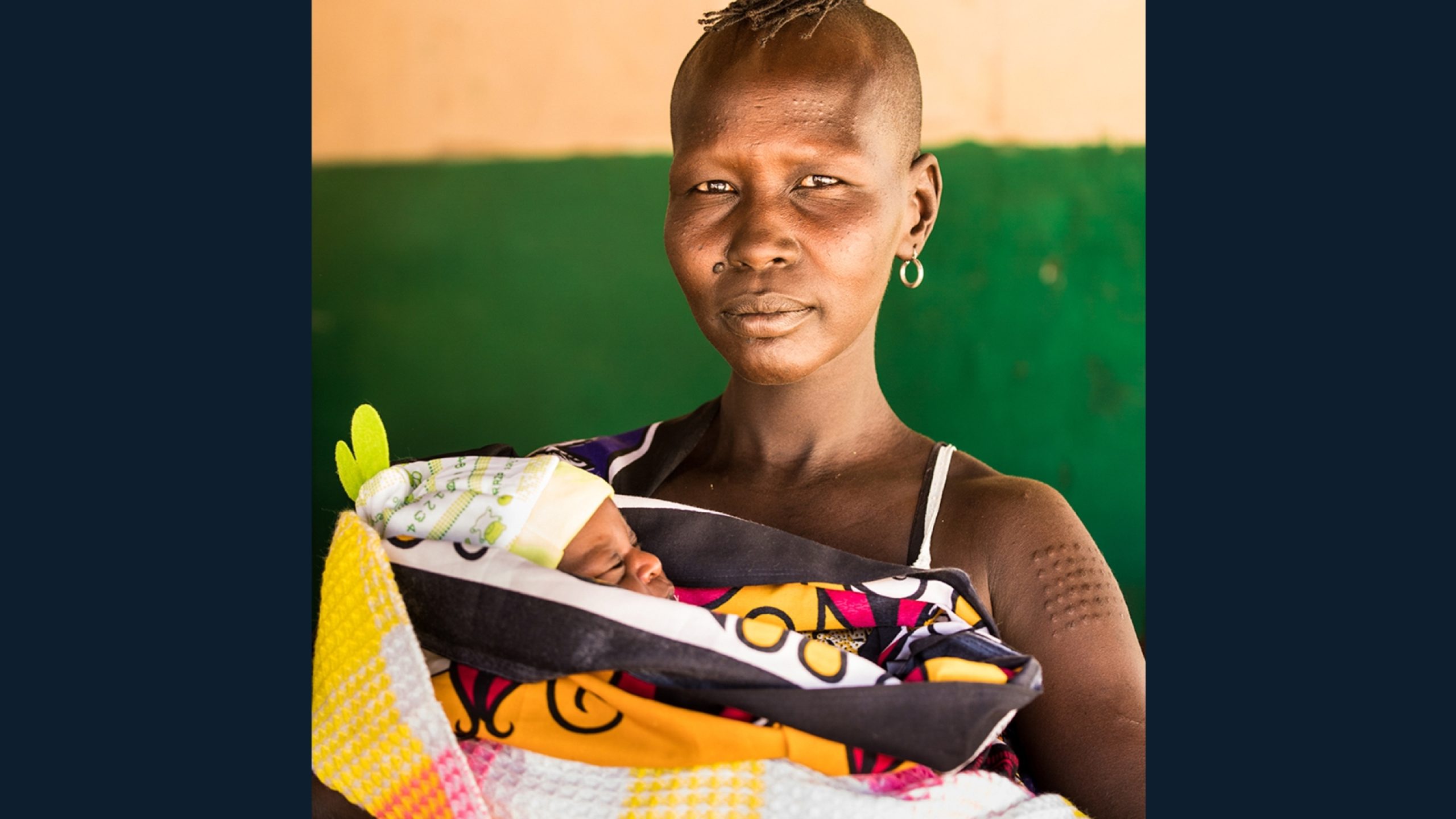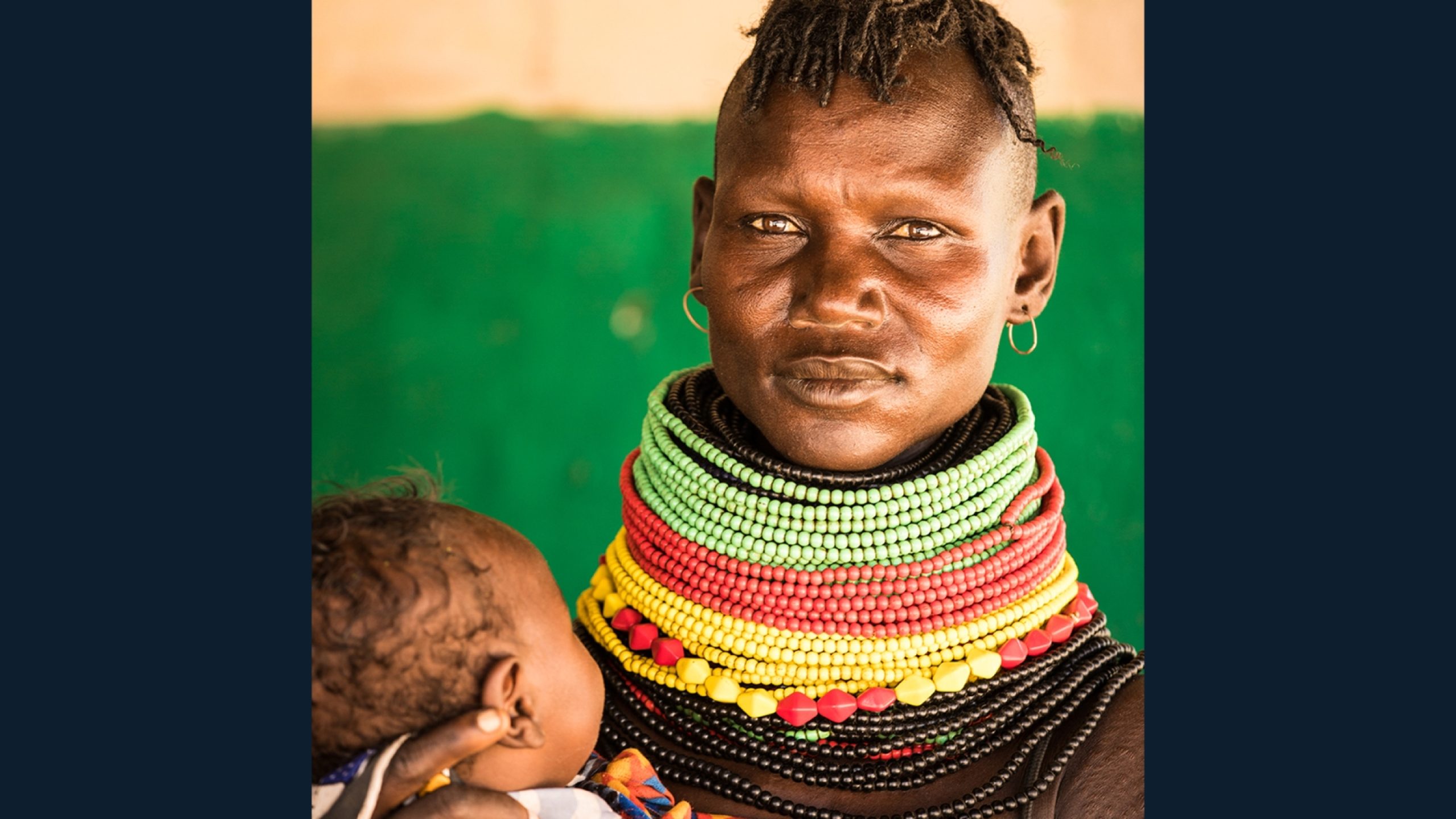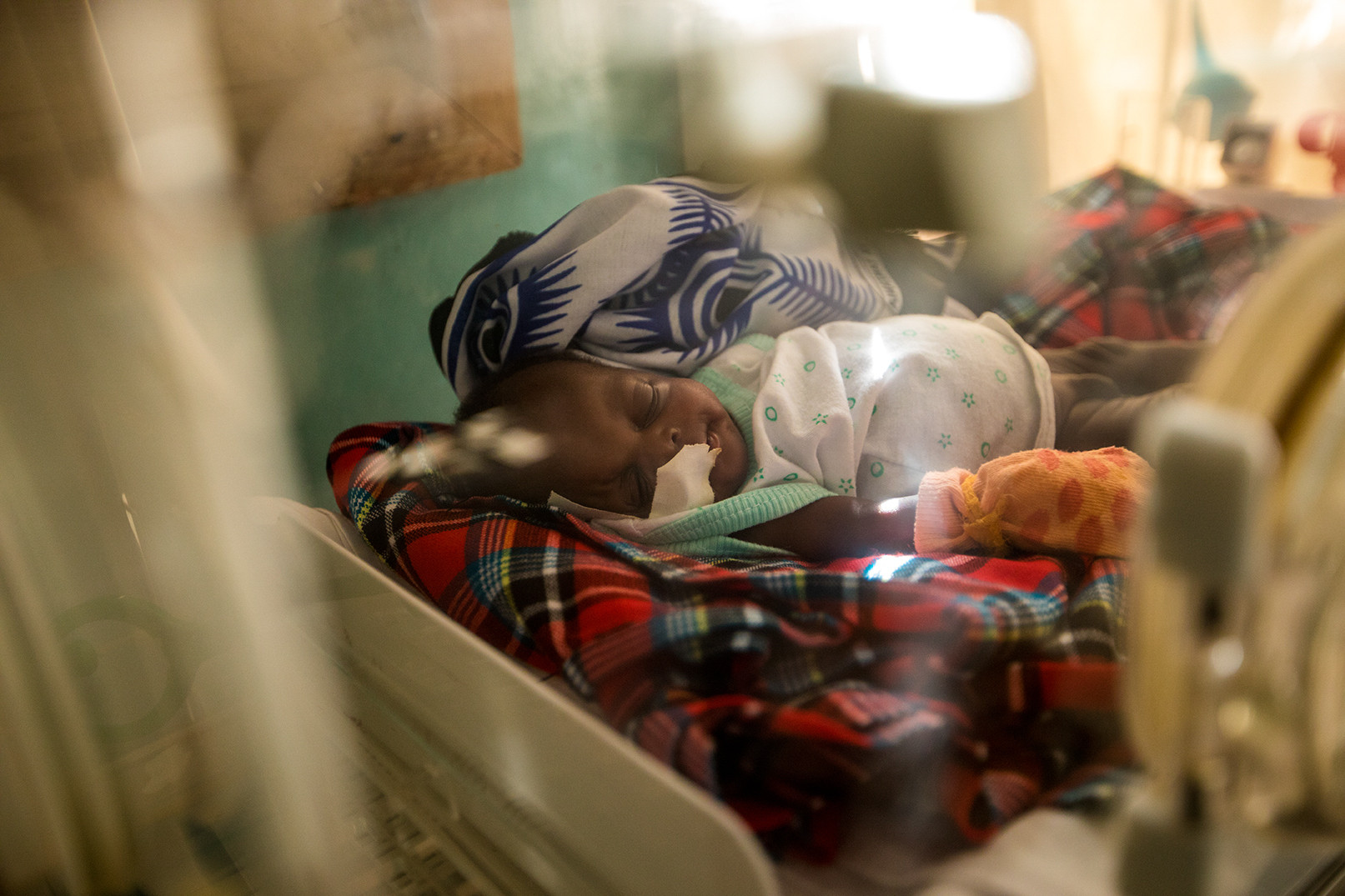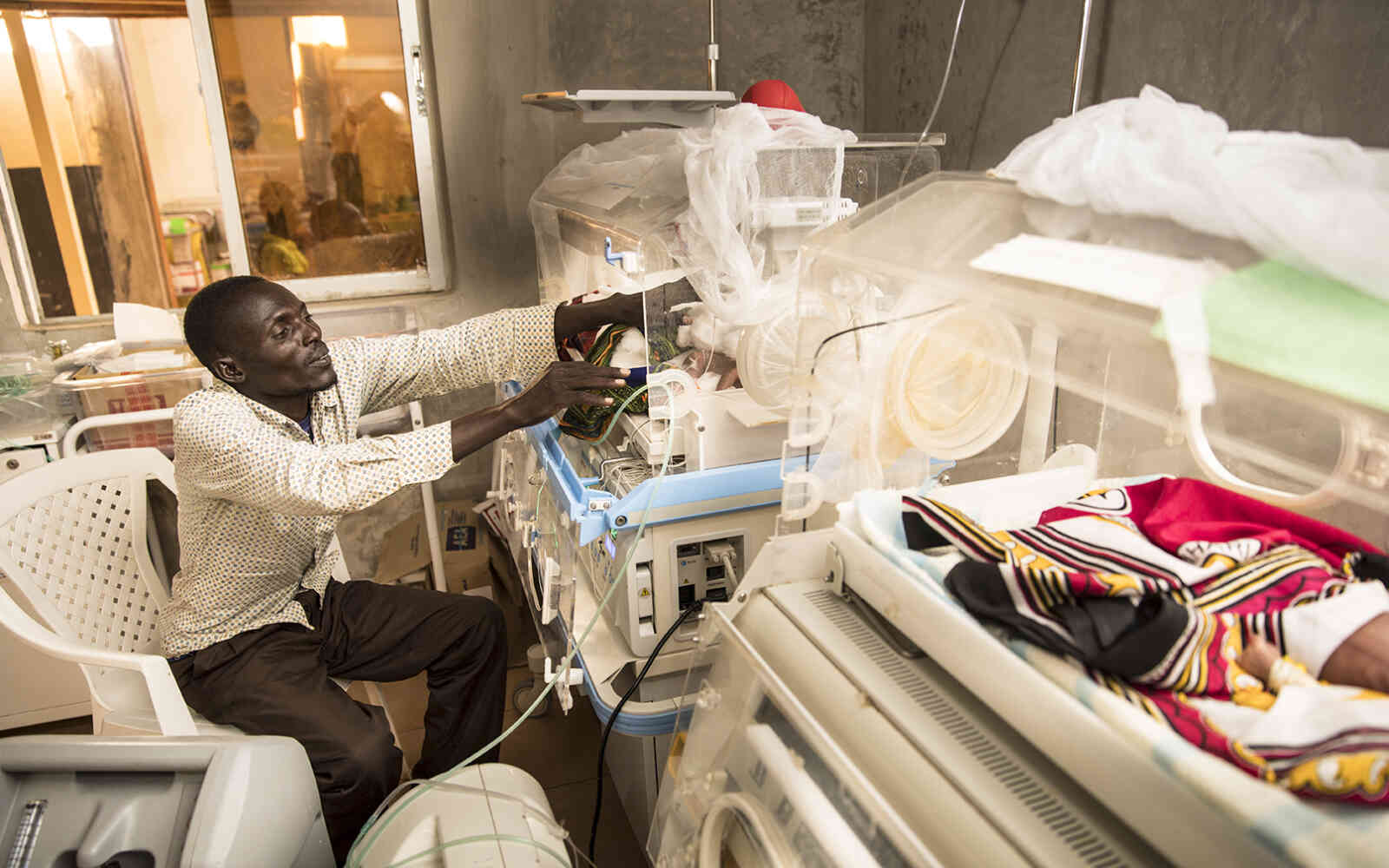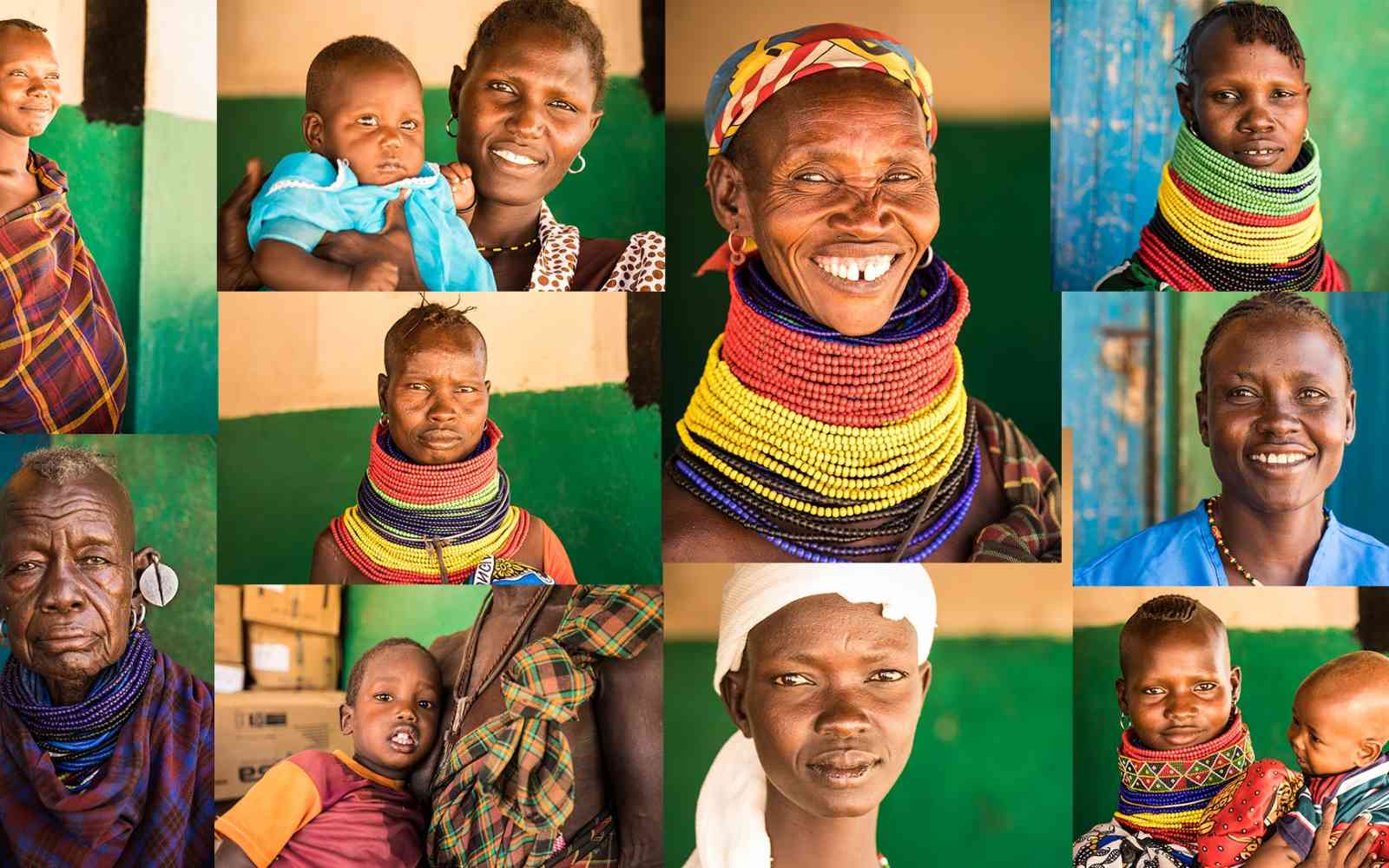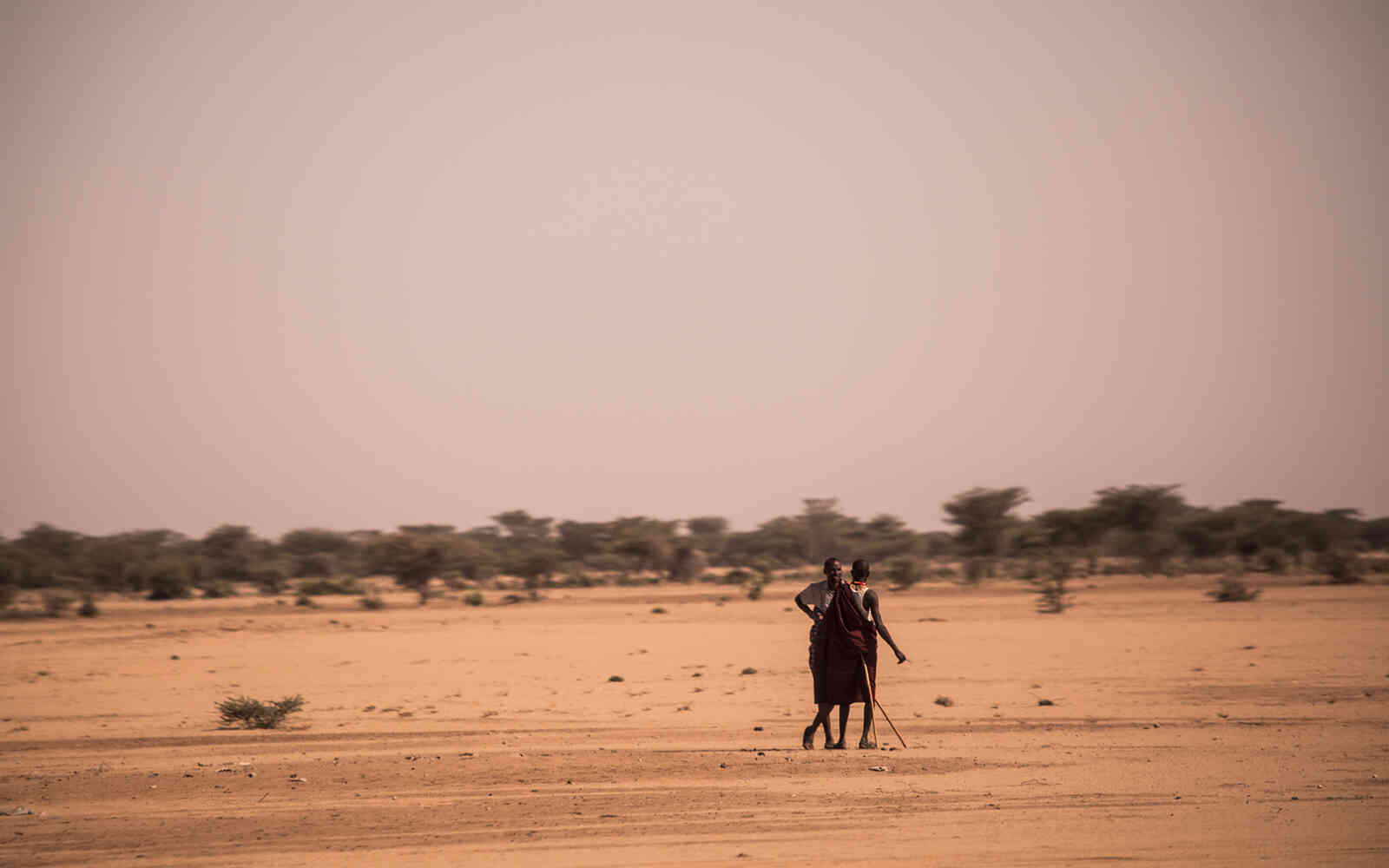The United Nations Office for Project Services (UNOPS)

To help more mothers and their babies: Catherine's story
In the second part of our series we introduce you to Catherine Nasike, a mother of three and a Community Health Volunteer. On our journey, we visit her Turkana home, meet her family and neighbours and are guided through Catherine’s experiences as a volunteer.
The four-kilometre ride from the health centre to Catherine’s home is bumpy. The unpaved route offers little shade from the sun, yet is one that Catherine walks often. Unlike many of her neighbours whose homes are made from sticks and leaves, Catherine has a two-room mud house.
- In a three-part series, we explore the realities of pregnancy and childbirth in one of Kenya’s poorest counties.

At the settlement, Catherine’s three children – Gilbert, Alfred and Lucy – run out to greet their mother. Inside her home, Catherine explains that like other women in her village, she is responsible for finding food and water, cooking for the family, and looking after the children.
“There is no water tap nearby. We have to find places to draw water. Sometimes they are very far away.”

Amidst one of the worst droughts in the county’s history, food and water are in very short supply here. Cattle produce little milk and the community, we are told, must forage for local fruits for pulp and juice to survive.
“We eat one, maybe two times a week,” explains one of Catherine’s neighbours. “Nothing is growing here these days.”
Gilbert and Alfred are responsible for finding water for their mother. Scroll right and join Alfred and Gilbert as they go in search of water for their mother.
Being a community health volunteer
Catherine has lived the challenges her community faces, earning her respect among her neighbours. She does not take her responsibilities as a health volunteer lightly.
Whenever she hears that a woman is pregnant, Catherine visits them as soon as she can to encourage pre-natal care. She often refers these women to the clinic and even accompanies them on their visits. Her voice is loud, advocating for women to access health, but also on behalf of women, conveying their hesitations to health care professionals and looking for a path forward.
She explains:
“A woman cannot just go to the centre without the agreement of her husband first, or the father or brother for women who are not married.”
“Here, men can have many wives. They decide all the health matters for them.”
But with men in the community often away tending to their herds for days at a time, this can be quite impractical.
Catherine recounted a time when she worked with a fifteen-year old, who, unmarried at the time, relied on her father for health decisions. Based on her training as a health volunteer, Catherine suspected the girl might have a difficult birth and encouraged her father to take his daughter to the clinic when labour started. Her efforts paid off.
“I was not there when she actually started having pains. Some other people took her and she was okay and also her baby. I was so happy because she went because of me,” she recalls.
“I encourage my people so that they can help themselves and their children. Therefore, mothers are prevented from losing their newborns.”
Mothers among the Turkana community tend to be very young and more prone to birth-related complications. Catherine believes that her work as a community health volunteer helps prevent the unnecessary deaths of mothers and babies.


Reflecting on her own experiences with childbirth, she believes that the information and support that community health volunteers provide would have been very helpful. Catherine was just 16 when she gave birth to her son Gilbert, and it was a complicated pregnancy. She had to be transported by boda boda (motorbike taxis) to the Lodwar County Referral Hospital. She arrived with complications and was forced to wait several days to deliver her baby, because the hospital was not equipped to treat her over the weekend.
“If it was now, it would be different,” she says. “I would have much more help and the hospital would be able to do the delivery anytime without waiting.”
Back on the bumpy path out of Kangatosa, we head towards the Lodwar County Referral Hospital, in Turkana’s capital, to learn how things have changed at the facility over the years.
About the project:
Kenya has some of the highest rates of maternal mortality in the world. According to World Bank data, for every 100,000 live births, approximately 510 women lose their lives during pregnancy and childbirth. To help address this challenge, UNOPS is supporting the United Nations Children's Fund, to reduce maternal mortality and strengthen healthcare services across five of the worst affected counties in Kenya — Turkana was one of them.
As part of this $12 million project, funded by the United Kingdom’s Department for International Development (DFID), 57 health centres were rehabilitated incorporating a range of green technology retrofits and solar powered solutions, designed to minimize electricity usage and provide access to water services. Close to 500 days of training were provided to community volunteers and health workers, with more than 14,000 people trained.
The project was completed in June 2018 and the facilities were handed over the course of 2017 and 2018. They now stand to benefit an estimated 1.6 million people (based on catchment population numbers) across the five counties: Garissa, Homabay, Kakamega, Nairobi and Turkana.
UNOPS IN TURKANA
In Lodwar, the project team renovated the maternity ward at the County Hospital, upgrading the rooms and providing extra space for the women and staff that use the facilities. A new operating theatre has been built exclusively for maternal and infant health-related surgeries.
In Kangatosa, a new maternity ward has been constructed and fitted, with green technology. Funded by DFID’s International Climate Fund, this included the installation of solar panels and energy efficient light fixtures enabling this off-grid facility to be fully functional on solar energy.







